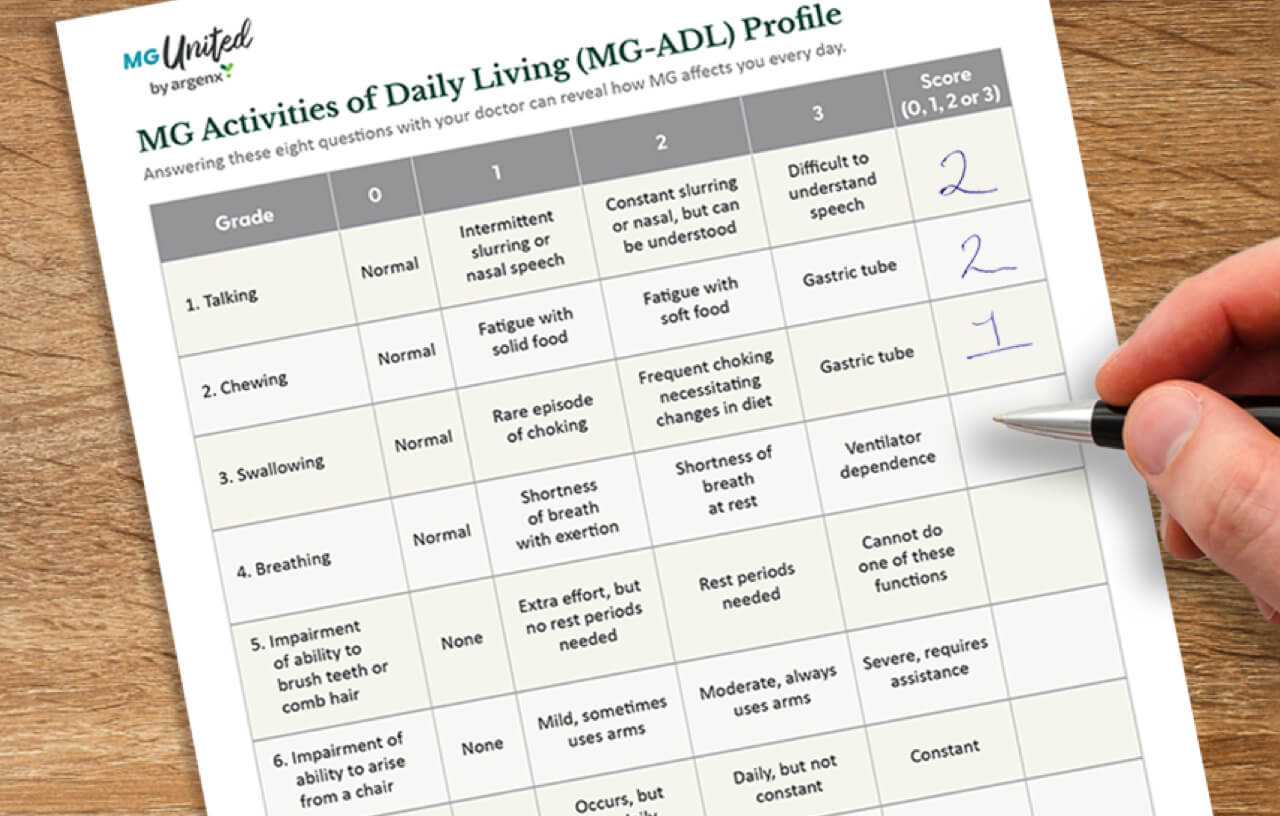How to identify and navigate myasthenia gravis (MG) triggers.
Everyone experiences myasthenia gravis differently. Not only can MG symptoms vary among different people, but their triggers can too. Triggers can cause symptoms to flare up and even lead to an MG crisis in which it becomes hard to breathe on your own.1 That’s why it’s important to know your triggers and how to navigate them.
Common triggers can include1,2:
- Stress caused by physical or environmental factors
- Temperature extremes
- Infections
- Emotional stress
- Certain medications or a change in medications
Identifying MG triggers
Because your symptoms can fluctuate, it can be hard to identify what triggers them. You know your body and how you feel better than anyone else, so knowing what’s “normal” for you may help you find connections between your symptoms and certain activities or circumstances, and help you figure out what triggers your symptoms.
When thinking about the importance of identifying and understanding MG triggers, Stephanie,* who lives with MG, says, “I think the first thing is safety. If we don’t know what’s triggering us, then we’re putting ourselves at risk.” They go on to explain, “I’ve been able to whittle down a majority of my triggers. Certain foods, fatigue, extreme cold and extreme heat are huge for me. If it’s going to be hot outside, I tend to just stay inside and crank the AC and leave all the fans on.”
And, when triggers are not recognized and minimized, symptoms can worsen. “Fatigue is hard for me,” Stephanie shares. “If I’m feeling fatigued, and I don’t rest, my MG is triggered for a week.”
Courtney,* who has been living with MG for over 20 years, says her MG can be triggered by stress, alcohol and certain foods. When describing how to identify triggers, she mentions, “It’s definitely a learning experience.” But she believes that patience and continuing awareness are key. “Be understanding with yourself; it might not be easy to point out the triggers in the beginning. Years from now, you might be like, ‘This is a trigger, and it’s been a trigger for all this time. Why didn’t I see it?’ Don’t be hard on yourself.”
To help identify her triggers, Courtney started journaling to track her symptoms and record her daily activities, including what she ate, the things she did and how she felt. She states, “Symptom tracking is essential for identifying exactly what your triggers are.”
I feel like if I had tracked my symptoms at the beginning, I would have been able to catch a lot of things early on.
Set some short-term goals
If you’re working toward identifying and better understanding your triggers, you may want to set some personal goals that can help. These may include tracking your symptoms and sharing information about your MG with your loved ones and healthcare team.
Tracking your symptoms may help bring to light any connections between different factors and the appearance or worsening of your symptoms. Courtney suggests, “Pay attention to what you do and then how your symptoms feel afterward.” That may help you to better understand your triggers and how they affect your symptoms over time. One way to track symptoms is the Myasthenia Gravis Activities of Daily Living (MG-ADL) scale, a tool that helps measure the impact MG has on your daily life through an assessment of your symptom severity.3
“I firmly believe in the MG-ADL scale!” says Michael,* who has been living with MG for about 15 years. Tracking symptoms with the MG-ADL scale has benefits. For instance, Michael uses the MG-ADL scale as a way to get ready for his doctor appointments, so he goes in feeling prepared and knowledgeable about how he’s doing.
Also, opening up to friends, family or a therapist may help you on your journey. Getting overwhelmed and worried can be a trigger, so it’s important to prioritize your emotional wellness. “Stress is a huge trigger for me, so I need to be really mindful about it,” says Courtney.
Michael’s advice is, “Reach out. Reach out to people and vent. Always have somebody to talk to.” And Stephanie says, “Identifying my triggers took time. Be patient, as it may take time for you as well. But also, don’t be afraid to reach out and ask for help. Your family, your friends, your doctors and online support groups are all great resources.” For example, Let’s Talk MG is a program that helps you connect with someone—a person who lives with or cares for someone with MG—who really gets it.
Work with your healthcare team
Everyone’s triggers may look different. Identifying and understanding your triggers may take time and may be an ongoing process, but it’s important, as it may help you navigate MG crises in the future. And, you don’t have to go at it alone. Speak with your healthcare team and be sure to work with them along the way.
And in the words of Courtney, “Remember to give yourself grace!”













